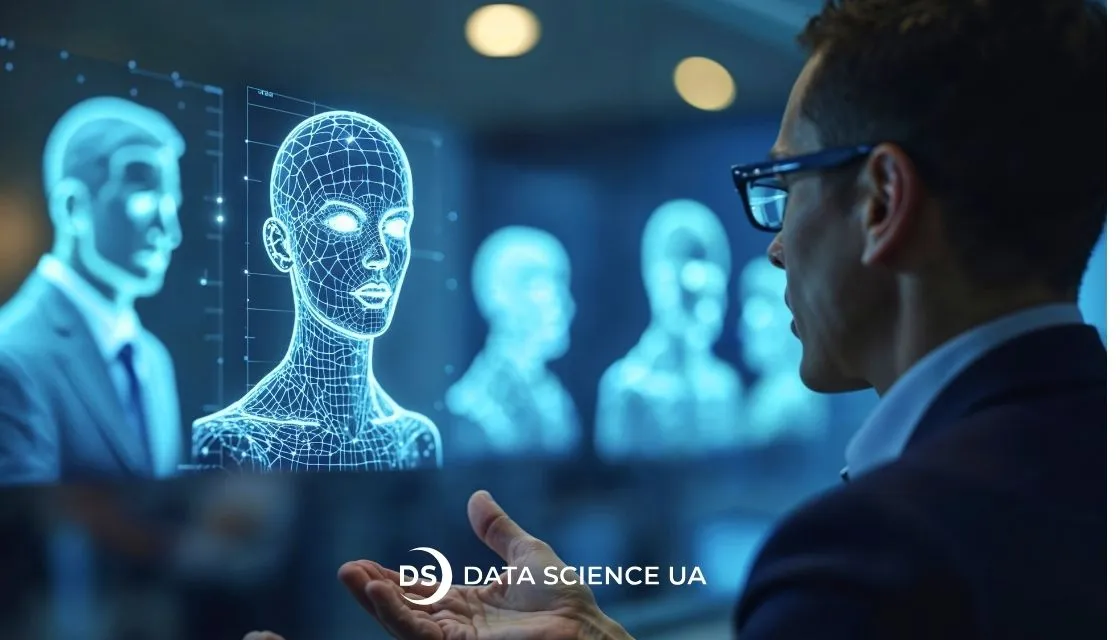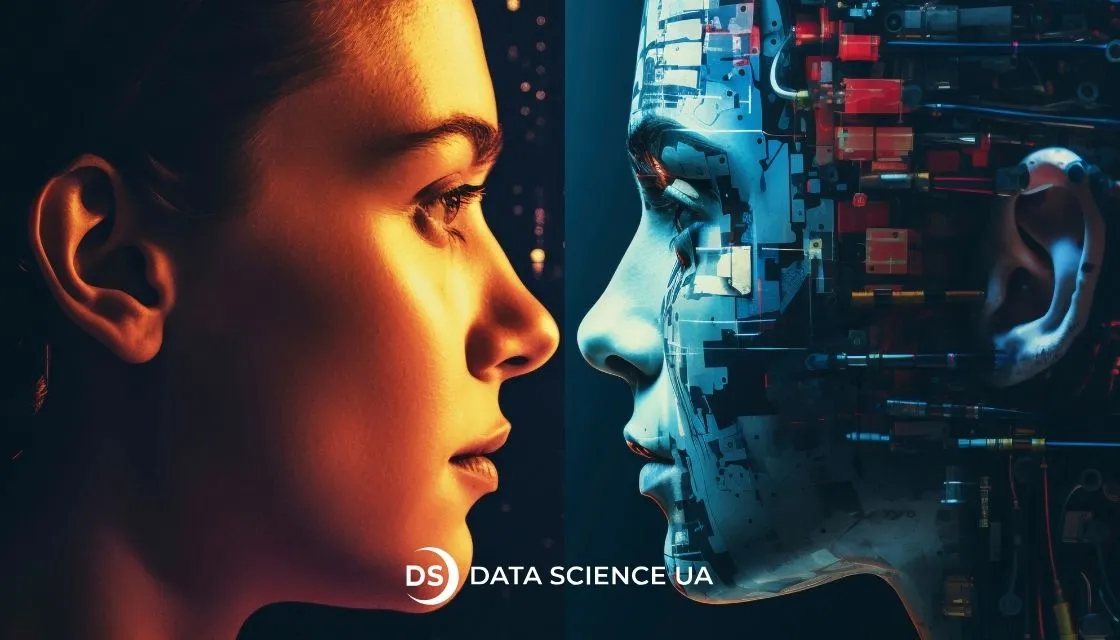Image recognition for retail industry: Use cases with examples
Image recognition for retail has become an integral part of our life. This cutting-edge technology uses AI to recognize and process objects, scenes, and patterns in pictures and videos, helping businesses turn visual data into actionable insights. In this blog post, we will look at how retail image recognition software can increase profit for companies.
Understanding image recognition
Retail image recognition is a subfield of computer vision and artificial intelligence that allows machines to recognize and analyze images in a way identical to human visual perception. Image recognition for retail is important because it improves consumer interactions and automates procedures. This technology may learn from large volumes of visual data using algorithms and neural networks, improving their accuracy over time.
In Data Science UA, we are already actively helping other businesses implement semantic image segmentation services, but first, let’s examine together where this technology has proven itself and brought benefits to the companies that implemented it.

5 image recognition use cases in retail
Here are some notable use examples highlighting its influence, as well as firms leveraging these technologies:
-
Product tagging
ASOS is an excellent example of how image recognition can be used to efficiently categorize and tag new products, which enhances the user experience. They automate the process of correctly marking and categorizing products by studying images of products using sophisticated ML algorithms. Customers will find products more quickly and simply as a result of this higher search accuracy and accelerated product listing.
Image recognition retail simplifies the process of labeling products in digital catalogs, allowing companies to better manage their inventories. This technique enables the identification and classification of products based on visual attributes such as color, form, and size. Through streamlining product labeling, merchants might improve searchability and accuracy, allowing customers to identify things quickly and effectively.

A virtual interface delivers an organized catalog of products based on color, style, and category tagging using AI-tagging that is automatic. Smart tags help customers explore e-commerce using similar items with ease.
-
Personalized product recommendations
A retail chain Eva with over 1,000 stores approached our company with a request to increase profit opportunities from its existing audience.
To help them, we developed a new recommendation system that increased the average basket size by 0.4 items. As a result, their churn rate decreased from 20% to 15%.
Using picture recognition, retailers can study client purchasing history and preferences to provide personalized product recommendations. Retailers can recommend comparable or complementary things to customers by studying the visual features of the objects with which they engage. This personalized strategy not only improves the shopping experience but also boosts conversion rates and average order values.
Amazon uses retail image recognition technology to study consumer interactions and make personalized suggestions based on visual characteristics.
eBay uses image recognition retail execution to recommend things that buyers may be interested in based on their previous views and purchases.
-
Smart mirrors for virtual try-ons
Smart mirrors with image recognition technologies create a dynamic and entertaining shopping experience. Customers may digitally try on clothing and accessories without actually altering them, allowing them to see how different items look on them in real time. This innovation reduces the need for fitting rooms, increases customer happiness, and lowers return rates. Rebecca Minkoff boutiques have smart mirrors that allow customers to try on clothes virtually and learn more about the products. L’Oreal uses smart mirrors in its stores to let customers visually try beauty products.
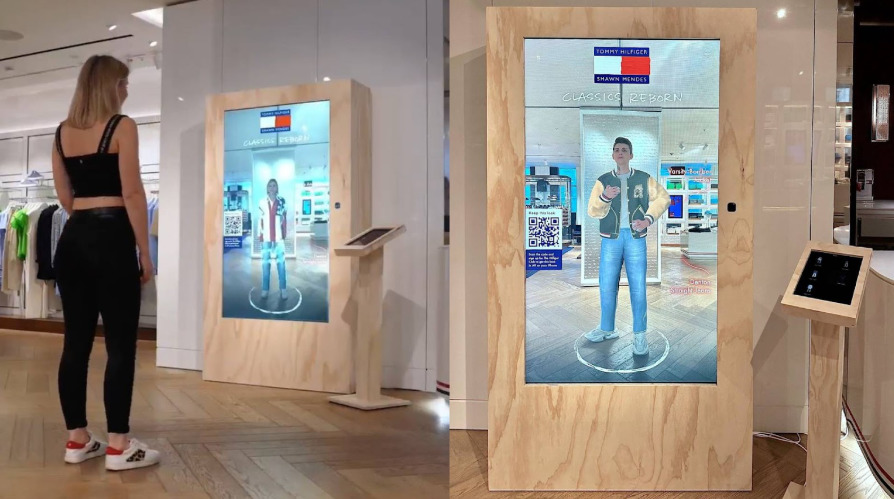
An online shopper approaches a thin, interactive smart mirror that overlays computer-generated garments in real-time. A mirror, adapting lighting levels and angles, provides a natural preview, while the user may test different styles without needing to physically change dress.
-
Similar product recommendations
Retail image recognition technology can also be used to recommend comparable products based on visual similarities. When a customer views a given item, the technology searches the catalog for additional products with similar characteristics, such as design, color, or style. This feature not only helps buyers find new things but also encourages additional purchases, which improves total sales performance. Pinterest uses visual search technologies to help users find related products based on the photographs they upload.
Alibaba uses image recognition to recommend comparable items to clients who browse their online marketplace.
-
Image-based search
Image-based search is a technology that allows one to search for information across the web using images instead of words. One uploads a picture, and the technology scans it to find similar photos, things, objects, or sources.
How does it work?
- Uploading an image – The user uploads a picture or includes a link to the picture.
- Image analysis – Artificial intelligence programs recognize objects, colors, textures, and other features.
- Matching process – The computer compares the picture with its database and responds with similar or exact matches.
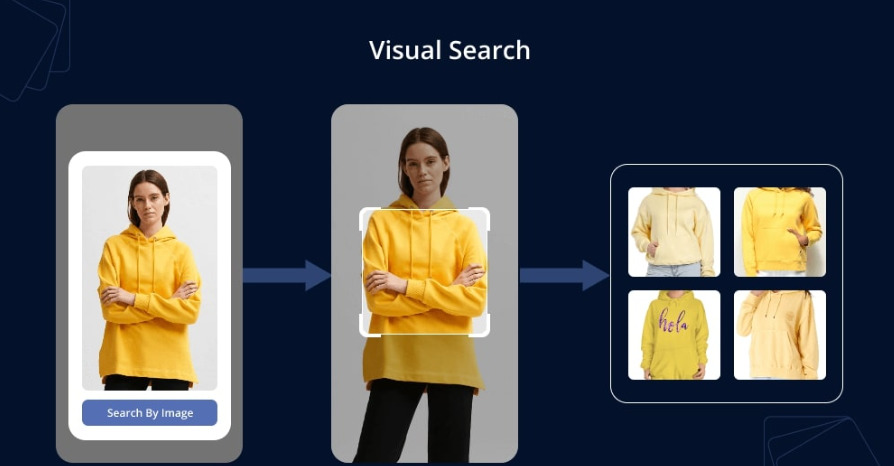
Cameras scan shelves in real-time, tracking stock levels and alerting staff to restocking needs, improving efficiency and customer satisfaction.
Image recognition in retail use case with Data Science UA
Earlier, we mentioned this case, and now we would like to share additional details. By deploying advanced machine learning algorithms, we created a system for Eva that scans store shelves and identifies products in real-time.
The project involved training the model on thousands of images to ensure high accuracy in product recognition. An additional benefit is the improvement in customer loyalty, which is rising due to a successful shopping experience.
Furthermore, we created a customer retention strategy based on AI prediction technology. This allows for early detection of buyers whose purchasing activity is declining. The results were impressive: the retailer saw a significant reduction in out-of-stock items and improved operational efficiency. Furthermore, the insights gained from customer interactions allowed the retailer to optimize product placement and marketing strategies.

Data Science UA assists you with different business needs. Wanna know more? Refer to our service page.
Applications of image recognition software in retail
Monitoring out-of-stock items
One of the key uses of image recognition in retail market is to track out-of-stock items. Retailers may use cameras and image recognition algorithms to scan shelves in real time and identify products that need to be replenished. For example, Walmart implements image recognition technology to scan store shelves in real-time. The system identifies when popular products, such as snacks or beverages, are out of stock and sends alerts to store staff. These AI image recognition examples replenishment helps maintain optimal stock levels, reducing lost sales and ensuring customers find their desired products.
Price monitoring
You will definitely like this technology if you have a physical store! Retailers can employ image recognition systems to take pictures of shelves and compare them to marketing materials or pricing databases. It guarantees pricing accuracy and alignment with marketing plans, allowing retailers to promptly correct mistakes. As a use case, we can mention Target. This firm employs image recognition software development services to audit shelf prices regularly. The technology captures images and compares them to pricing databases, ensuring accuracy and quick resolution of discrepancies
Self-service checkout automation
Self-service checkout systems using image recognition technologies make the checkout process easier for customers. The automation speeds the checkout process and reduces wait times, boosting satisfaction among consumers. Amazon Go created a cashier-less shopping experience using image recognition technology, that allows users to choose things off shelves and purchase them quickly through their app, removing the need for typical checkout processes. It’s a win-win strategy: less staff are required to manage operations, and customers enjoy shorter wait times, avoiding long lines.
Foot traffic analysis
Image recognition for retail can be used to analyze foot traffic patterns in retail stores. This information can be used to inform store layouts and staffing decisions, resulting in a better shopping experience along with higher sales. Nike uses image recognition in retail market to track client movements in their retail stores, offering information about popular areas and peak shopping times to help improve store layouts and marketing campaigns. Learn more in our outsource image processing services.
Planogram compliance monitoring
Compliance with planograms is critical for successful retailing. While scanning shelves and comparing the results to the planogram, retailers can rapidly spot errors and make required changes, making sure the displays are attractive as well as in sync with their advertising goals. Sephora uses image recognition software so that products are displayed in sync with planograms, allowing both speedy detection of inconsistencies and effective visual merchandising.
Challenges in implementing image recognition in retail
Despite its numerous advantages, implementing image recognition technology in retail is not without challenges, but don`t worry, with a qualified AI consulting team you can overcome these challenges easily and Data Science UA team will definitely help you!
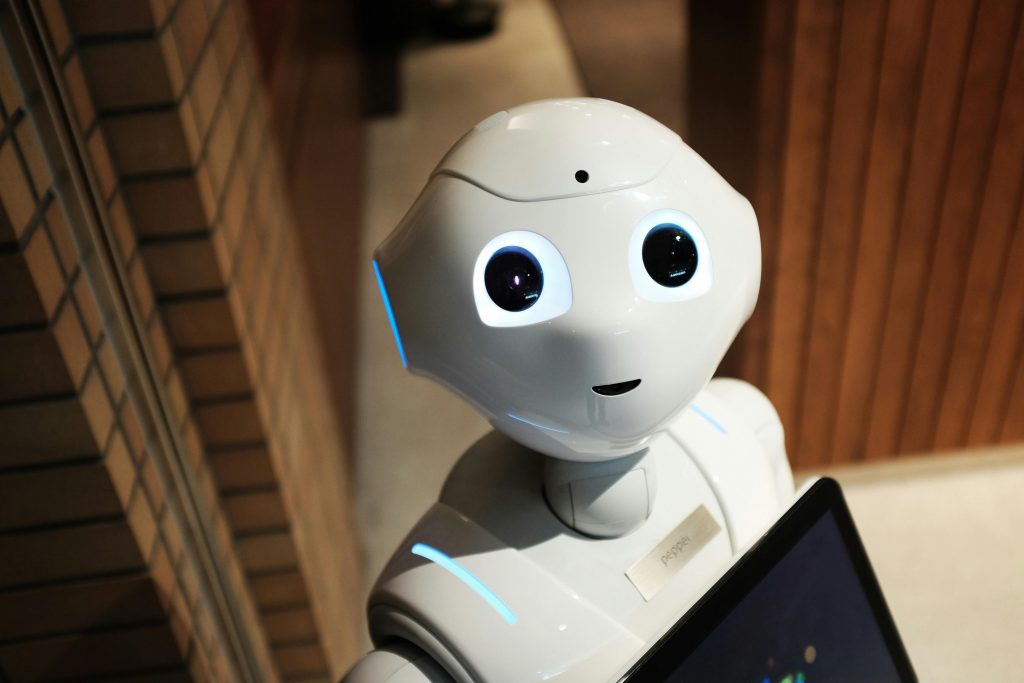
Occlusion issues
Occlusion happens when objects partially block the view of other items, making it difficult for image recognition systems to recognize them correctly. However, advances in algorithms and machine learning approaches have greatly increased the capacity to identify obstructed things. Merchants may achieve consistent performance even in complicated settings, making this challenge less daunting
Viewpoint variability
Image recognition systems’ accuracy can be affected by different points of view. However, current technologies are becoming more resistant to viewpoint changes. With 3D modeling and incorporating multiple angles into training data, retailers can enhance the system’s ability to recognize products from various positions, mitigating this issue effectively.
Background noise and clutter
The presence of background noise and clutter in retail locations might make picture recognition difficult. However, developments in segmentation and filtering technologies enable systems to focus on significant objects while rejecting irrelevant ones. By constantly improving these capabilities, buyers may successfully manage clutter-related difficulties while providing image identification that stays reliable and efficient.
Changing the shape of an object
Another problem with image recognition in retail is identifying products even when their shape has been altered. Consumers may crumple packs, bend labels, or capture images from perspectives that distort the original form. Irrespective of these deformations, product image recognition must identify and categorize the product correctly.
For example, at a supermarket store, a bag of crisps may appear flattened so is harder to distinguish from other bags. However, advanced algorithms analyze top-level visual features such as logos, color, and partial text to precisely recognize the product.
Lighting
Lighting conditions can greatly influence image recognition in retail settings. Inadequate lighting, shadows, or reflections can change the appearance of a product in an image and result in misclassification. Retailers need to make sure that their AI systems are able to manage various lighting conditions, ranging from poorly lit store aisles to well-lit outdoor areas.
Present image recognition techniques use deep learning techniques to normalize differences in lighting so that a product can be recognized correctly regardless of whether it is in direct sunlight, artificial lighting, or poor lighting.
For instance, in self-checkout technology, a packaging design can appear too dark or too light due to store lighting, but AI compensates by adjusting for these differences to render correct recognition and pricing.
Importance of image recognition technology for retail businesses
Time efficiency
Image recognition technology saves time by automating repetitive operations. For example, it can rapidly scan and track inventory levels, eliminating the need for manual stock inspections. Retailers can also utilize it to accelerate checkout operations, especially in self-checkout systems, where it rapidly recognizes products, decreasing long lines and increasing consumer satisfaction.
Real-time field actionability
One of the most significant benefits of image recognition in retail market is its ability to deliver real-time insights that may be used instantly. For example, image recognition can assess client interactions with products and notify staff if a product is regularly picked up but not purchased, indicating a pricing or positioning issue. Real-time actionability improves store performance and responsiveness
Streamlined operations
Image recognition technology helps to streamline retail processes. This technology can enhance security by utilizing facial recognition for loss prevention and client identification. Retailers such as Amazon Go have used image recognition to create a cashierless checkout system, which not only makes the shopping experience better but also lowers operational expenses. Overall, integrating picture recognition allows businesses to build smoother workflows, reduce manual activities, and improve both front- and back-end operations.
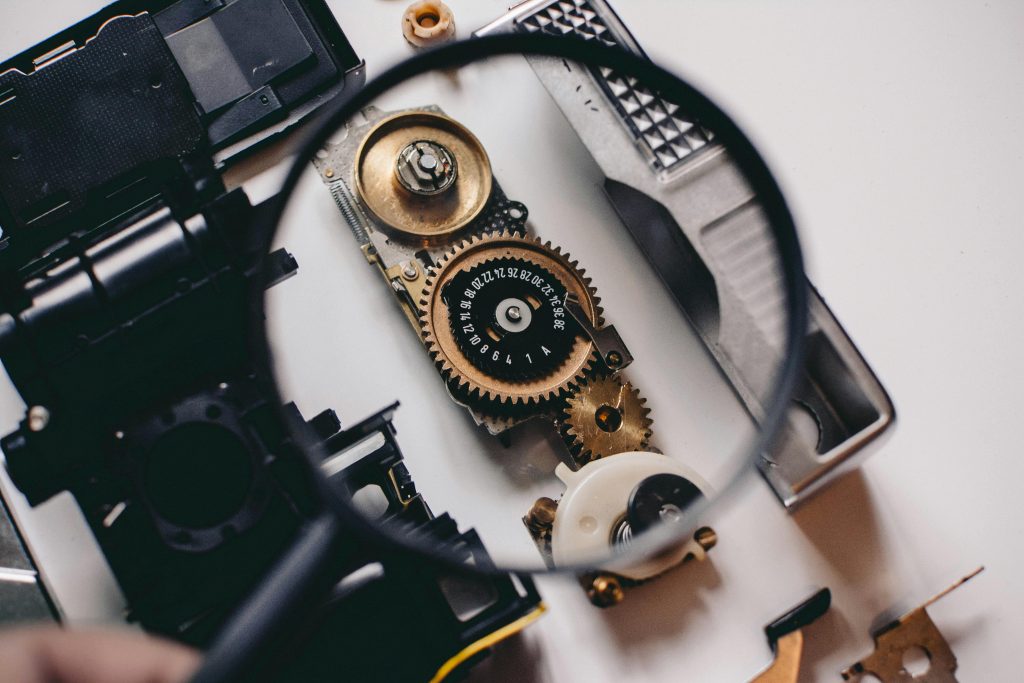
Technologies powering image recognition in retail
CV
This technology enables machines to interpret and understand visual information from the world. Computer vision is the foundation of image recognition, allowing systems to process images effectively.
ML
In retail, ML allows image recognition systems to better identify objects under various conditions, such as changes in lighting or positioning. This adaptability is crucial for inventory management, where product images might not always be perfect or consistent.
DL
More advanced image recognition applications, such as facial recognition for security or sentiment analysis to assess customer happiness, rely on deep learning. These deep learning models can interpret massive volumes of unstructured visual data, making them perfect for dealing with high unpredictability in client behavior and retail settings.
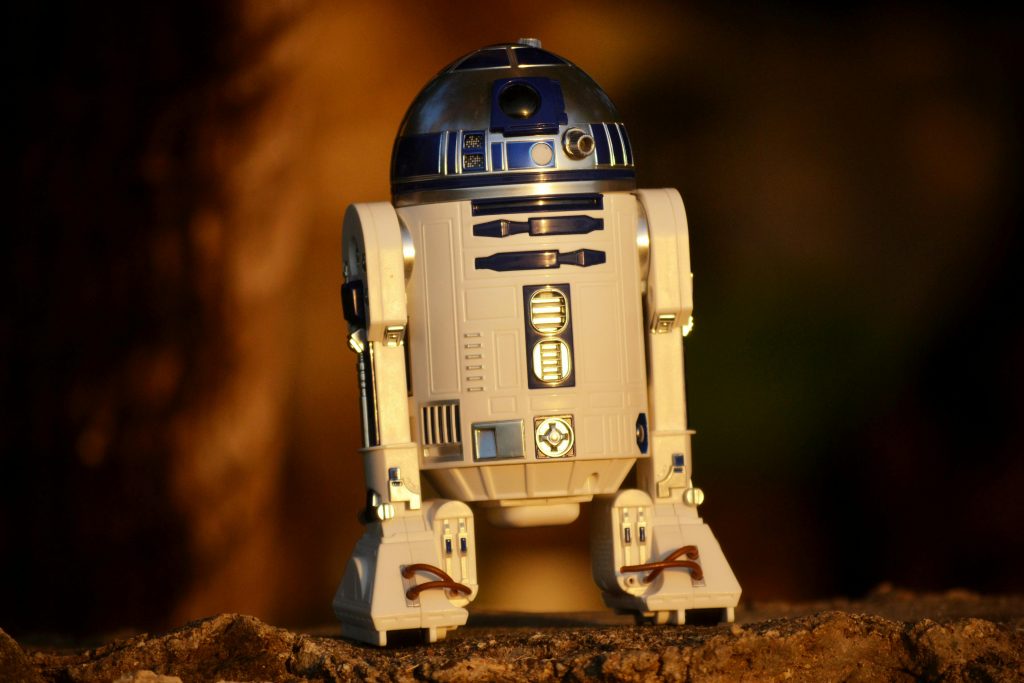
Well, now you know what to do!
To sum up, image recognition for retail is changing the industry by improving customer experiences, and inventory management, and providing valuable insights into consumer behavior, and in Data Science UA we can help you with it!
The future of retail is undoubtedly intertwined with image recognition technology, and those who harness its potential will lead the way in this dynamic industry.
FAQ
What are the primary functions of image recognition in eCommerce?
In eCommerce, image recognition in retail market improves the user experience through providing visual search, increasing product recommendations, and assisting with inventory management. It also supports verifying product authenticity in online transactions.
What types of data does image recognition collect in retail environments?
Retail image recognition collects data on product availability, customer behavior (such as product interactions), display conditions, and foot traffic patterns. This information is useful for optimizing store layouts and inventory management.
How does image recognition software handle privacy concerns in retail settings?
To address privacy issues, picture recognition software hides client data, follows standards such as GDPR and is accessible by notifying clients about its use. Data is securely secured to protect consumer information.




